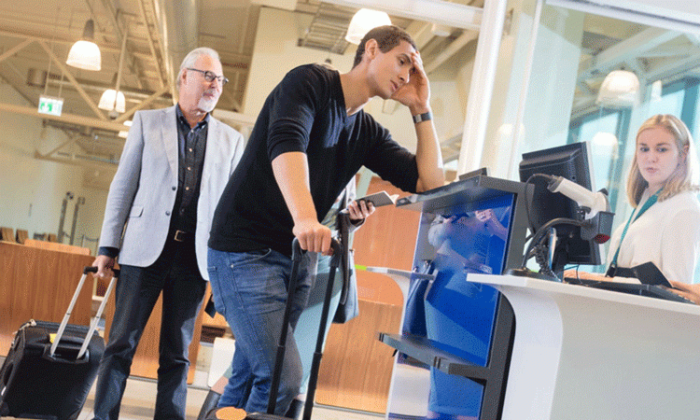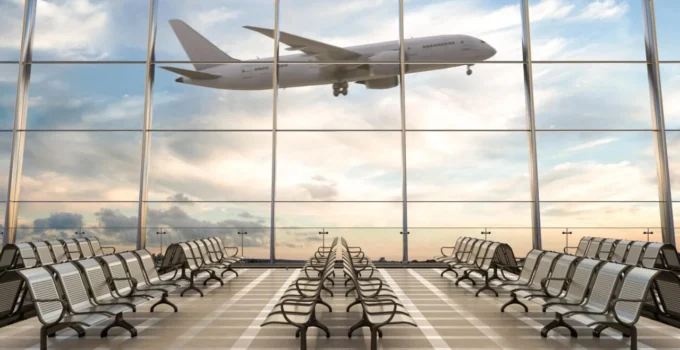There is no doubt that the transport industry has been totally reshaped by modern technology, especially in the last fifteen to twenty years. So when you think about the future and what we could expect in the next decade, the idea of coming to work on time, going on vacation with family or friends, and even going to a sporting event will be changed even more drastically.
As for the airports, for many they don’t seem like the most pleasant places in the world but believe us, they are constantly changing so that our journey is as pleasant and safe as possible.
Judging by what has been presented by the airport suppliers of goods and services, at their gathering in London three years ago, there will be more innovative solutions people will find very useful when in need to o through the airport faster. The whole airport experience will once again be transformed.
For those who didn’t know how technology has made things way faster in these usually crowded places, we have pointed out a couple of examples to show you.
New, time-saving services

Source: freepik.com
If you haven’t heard about the airport meet and greet services yet, we highly recommend you to get acquainted with these, as they might save your life at one point. They have been designed for those who cannot waste time being dragged through the airport and waiting in long lines for check-in, passport control, and all other formalities. For those in a hurry, technology has made it possible to hire such a service and speed up the mentioned formalities, including traveling from one terminal to another.
Lost luggage is no longer your worst nightmare
Having to switch planes used to be very risky because your luggage could easily get lost during the trip. Judging by new technologies, these stressful situations will be less and less frequent, and if they do occur, one will no longer have to wait a lifetime to obtain his personal belongings. This is because tracking down lost luggage has never been easier. And there’s a number to prove this statement.
For example, in 2017 the record has already been broken with only 5.57 lost bags per thousand passengers. Airport management and quality controls have even started drafting new rulebooks on searching for lost luggage. According to it, airlines are obliged to carry out constant monitoring of luggage through four observation points: collection from passengers, loading onto the plane, unloading from the plane, and handing over to the passenger. This information is recorded and can be shared between companies in order to track down a lost suitcase more quickly. Modern technology made it all happen.
Did you know that more than 4.6 billion suitcases are transported every year, which makes their tracking and transport very complex? With the new tracking system and the use of the latest RFID technology, everything is going to ensure that your suitcases are exactly where they need to be. Chips that work based on this technology are installed in suitcases or luggage tags and tags emit a signal via radio waves, the detection of which can reveal the exact location of the suitcase. What is particularly interesting is that more and more often travelers can get these tags for their suitcases themselves, and the new chips are more perfect and can be more easily applied to the suitcases themselves. Their reading is simpler and more reliable than classic bar codes.
Moreover, an app has been developed for travelers who want to make sure their suitcases won’t be lost. By using it, they can track it down whenever they want. By simply entering the number of your luggage, you can see where it is lost and you can order it to be returned to your home address.
Airport queues are no longer a nightmare

Source: medium.com
Like any place where many people circulate, airports are often too crowded. So, in some, especially those in big cities, there are queues at checkpoints, shops, cafes, and gates, and are a real agony for otherwise nervous travelers. The lack of places to sit forces tired passengers to sit on the floor, which further slows down movement. Imagine that you are in a hurry to get to boarding. It can be a real horror. That is why today intensive work is being done on crowd control at airport terminals. Many companies are developing software solutions that can manage pedestrian movements inside the airport. By installing smart sensors, the software receives information about traffic jams and redirects passengers to alternative passages. Technology that includes passenger traffic control goes even further. It can already predict traffic jams and direct you to alternative routes before you get stuck.
Biometrics opens all doors
Biometric facial recognition technology also speeds up airport procedures. Although at first glance it is not very pleasant to know that during your stay at the airport you are constantly under surveillance and being filmed, the journey will be much more comfortable and faster. Imagine that automatic cameras recognize your face and, based on that, direct you to the correct queue. With biometric facial recognition, passengers can complete all their airport formalities much faster and safer. Biometric boarding, i.e. boarding a flight with the help of facial scanning, is current these days. In a fraction of a second, a special device maps your face and if it recognizes you, you enter the plane. There are no more computers into which you have to type the passenger’s name, no more scanners that scan boarding passes and passports, and no more clerks who then flip through your documents and stare at you. Everything is faster, safer, and simpler.
Communication between the airport and the passenger

Source: nap.edu
Passengers figuratively communicate with the airport by exchanging information. Electronic displays that show flight information are now becoming more and more interesting. They can also contain the weather forecast at the destination, and various service news such as the length of waiting in lines, which can be very useful.
These are all things we get to enjoy living in these modern tech times. Best of all, the future can only perfect airport service even further, making the agony of spending time commuting, a lot less.




